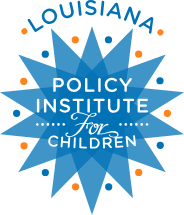I. PURPOSE AND APPROACH
Home visiting for pregnant and parenting families with young children is a proven, evidencedriven strategy that enhances family and child well-being, supports improved maternal and child health outcomes, and helps families connect to important community services. The purpose of the Home Visiting Capacity Study is to document the history of home visiting in Louisiana, summarize current home visiting efforts, and provide information on key elements in moving forward to assure that all families who want to participate in home visiting can do so.
II. SCAN: HOME VISITING BENEFITS AND HISTORY
Home visiting programs provide support to pregnant and parenting families with young children by connecting them with trained professionals who offer guidance on child development, parenting, and accessing community resources, and are designed to support and strengthen the parent-child relationship. These programs typically involve regular visits from a home visitor over a period of several months or years. Research confirms that home visiting programs can bolster positive parenting, improve maternal and child health, and promote child development leading to improved outcomes for both children and their families, including increased school readiness and the prevention of child abuse and neglect. Other research has shown that home visiting programs can lead to cost savings for the government through reduced reliance on social services and increased employment and earnings among participating families.
Home visiting programs often begin during pregnancy, or soon after the birth of the child, and work to build on the strengths of young families by providing resources and supports focused on promoting physical, social, and emotional health and ensuring children are ready to thrive in school. By the late 1990s and into the early 2000s, home visiting had become an increasingly popular approach to providing effective parenting education and preventing child abuse and neglect. In 2010, the federal government established the Maternal, Infant, and Early Childhood Home Visiting (MIECHV) program through passage of the Patient Protection and Affordable Care Act. The Jackie Walorski Maternal and Child Home Visiting Reauthorization Act of 2022 reauthorized MIECHV and increased the federal investment over five years. The federal government is now committed to $500 million per year in each of the next five federal fiscal years (FY 2023-2027). In addition, there is a newly required 25% state match that will be phased-in starting in FY 2024.
MIECHV supports home visiting programs and services that are voluntary for expectant parents or parents with young children from birth to age 5. These home visiting programs are required to prioritize serving families in communities that are at high-risk, defined as families with incomes at or below 100% of the federal poverty guidelines, pregnant teens, families with a history of child neglect or abuse, families with a history of substance misuse, and military families.
At the federal level, MIECHV is administered by the Health Resources and Services Administration (HRSA) in partnership with the Administration for Children and Families (ACF). MIECHV requires that each state, or jurisdiction, uses their MIECHV funding towards the implementation of one of 24 evidence-based home visiting models. The Home Visiting Evidence of Effectiveness (HomVEE) review determines which program models meet the U.S. Department of Health and Human Services (HHS) criteria for an “evidence-based early childhood home visiting service delivery model.” The review by HomVEE focuses on improved outcomes in at least one of eight domains:
- Maternal health, Child health,
- Positive parenting practices,
- Child development and school readiness, Reductions in child maltreatment,
- Family economic self-sufficiency,
- Linkages and referrals to community resources and supports,
- Reductions in juvenile delinquency, family violence, and crime.

